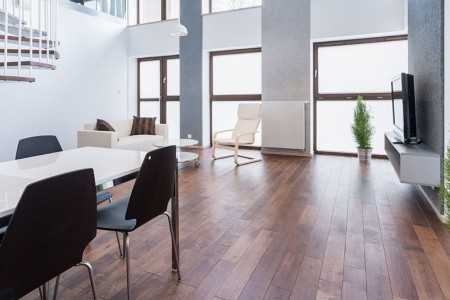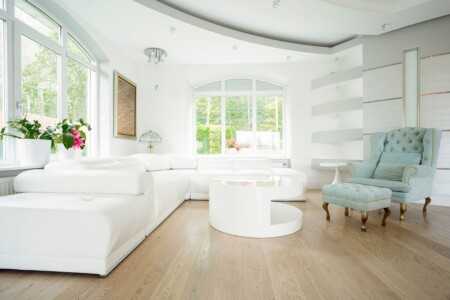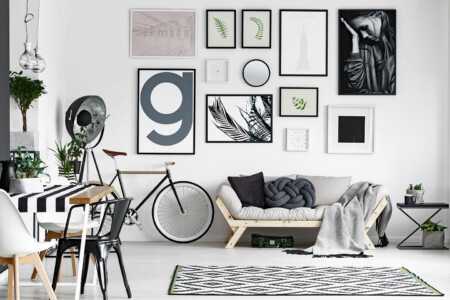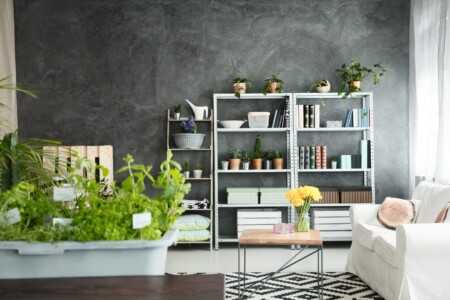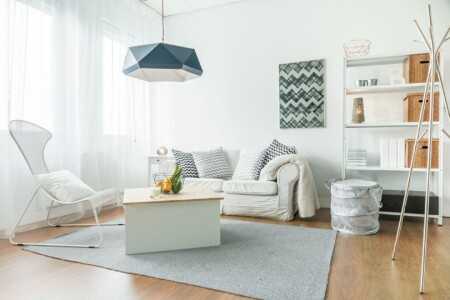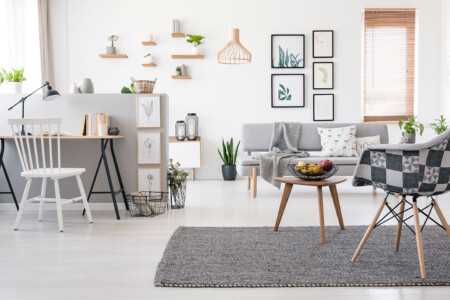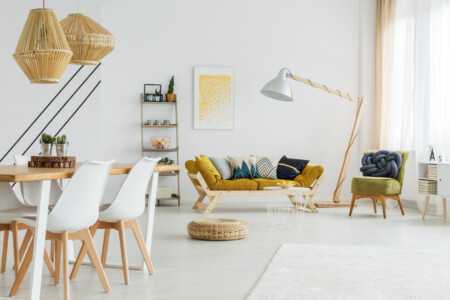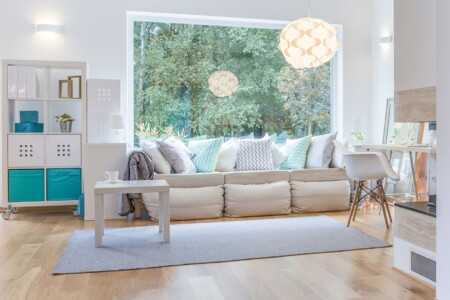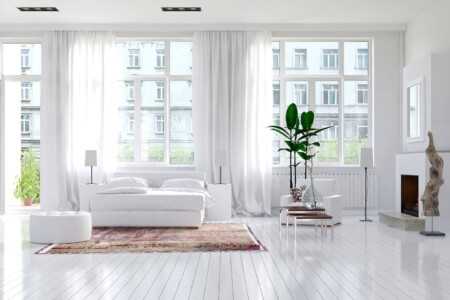Could this 3 persons 1-room studio in Hurghada Mubarak 8 meet the needs of families with blended families?

Assessing the suitability of a 3-person 1-room studio in Hurghada Mubarak 8 for blended families
When considering accommodation options for blended families, space and privacy top the list of priorities. A 3-person 1-room studio in Hurghada Mubarak 8 presents a unique living arrangement that warrants careful evaluation, especially for families with complex dynamics such as blended households. These families often require flexible living spaces that cater to adults and children with distinct needs while fostering harmony and comfort.
The physical space and layout
The primary consideration is the overall size and layout of the studio. Typically, a 1-room studio is an open-plan living area that includes combined sleeping, living, and sometimes kitchen spaces. For three occupants, this can be a tight fit. In a blended family, where there might be multiple children and adults from different family units, personal space becomes a challenge. Without separate bedrooms or clearly defined zones, families might experience difficulty in establishing boundaries.
In Hurghada Mubarak 8, some studios provide modern, clever storage options and multi-functional furniture, which can optimize limited space. For example, sofa beds, foldable desks, or partition screens can help delineate spaces for sleeping, homework, or leisure. However, even with these solutions, the studio follows a shared space model, which might require compromise and flexibility.
Privacy considerations in a studio setting
Privacy is often a crucial issue in blended families, where different parenting styles and routines coexist. This 3-person 1-room studio offers minimal privacy since all activities happen within one shared open area. For parents or children needing quiet or solitude, this setup might prove restrictive.
You might consider how the family’s daily schedule aligns with this space. If members spend substantial time outside the apartment or rely on local community spaces, they may successfully balance the privacy deficit indoors. Otherwise, the lack of separate rooms could increase stress or tension.
Suitability for family dynamics and activities
Blended families usually involve diverse activities, such as homework, work from home, playtime, and mealtimes, each requiring different spatial settings. The 3-person studio can handle basic needs but will require thoughtful planning to integrate these activities smoothly.
Hurghada Mubarak 8 area offers a variety of community amenities that can complement the small living space:
- Parks and outdoor play areas: Essential for children to expend energy and enjoy outdoor time, thus reducing indoor crowding.
- Community centers or libraries: Ideal for quiet study or work sessions outside the apartment.
- Local cafes and social spots: Opportunities for adults to socialize without tightening the studio’s living quarters.
Leveraging these options means that the family can better accommodate individual needs without feeling confined within the studio’s spatial limits.
Financial and location advantages
One significant advantage of choosing a 3-person studio in Hurghada Mubarak 8 is affordability. Compared to larger housing options, a studio is often more budget-friendly, making it an attractive choice for families who prioritize location and cost savings.
The neighborhood’s accessibility to schools, markets, and transportation further enhances its appeal. For blended families managing different schedules and requirements, such a convenient location reduces travel time and logistical stress.
Moreover, for families that prefer spending less on rent and more on creating memorable experiences through outings and community involvement, this studio can serve as a practical home base.
Adaptability to blended family needs
Adaptability is key when assessing if a 1-room studio suits blended family life. Families willing to establish clear routines, invest in space-saving furniture, and make effective use of outdoor and communal areas can create a thriving home environment in this space.
For example, using vertical storage solutions and multi-use furniture, families can carve out personal zones even in limited square footage. Additionally, establishing household rules around shared times and quiet hours can help mitigate conflicts typically arising from close quarters.
When might this studio be less appropriate?
Certain family configurations or circumstances might find this living space less suitable. Families with more than one or two children, or where adults require separate work or rest areas, may find the studio restrictive and challenging. Furthermore, if privacy and personal space are non-negotiable priorities due to individual needs, this compact unit might not meet expectations.
Emotional well-being must be considered, as crowded or pressured spaces can lead to stress, especially in a blended family where relationship dynamics already require nurturing and patience.
Final thoughts on making it work
Whether this 3-person 1-room studio in Hurghada Mubarak 8 meets the needs of blended families largely depends on family size, lifestyle, and adaptability. Families motivated to creatively optimize space, embrace good communication, and use the local community effectively can thrive here. On the other hand, those needing more physical separation and privacy might need to seek larger accommodations.
By weighing these factors carefully, blended families can decide if this Hurghada studio offers a practical, affordable, and comfortable home base.
Practical considerations and alternatives for housing blended families in compact living spaces
Space optimization: making every square foot count
Living in compact spaces presents unique challenges, especially for blended families that require privacy, flexibility, and comfort. When space is limited, such as in a small studio or one-bedroom apartment, it’s essential to utilize every inch thoughtfully. Consider multifunctional furniture like fold-out beds, expandable dining tables, and wall-mounted storage units. These pieces help maximize living areas, making it easier to switch between activities without feeling cramped.
Vertical space often goes underused in compact homes. Installing shelves higher up the walls or using hanging storage solutions can free up the floor area. Another clever approach is to designate specific zones for different family members or functions, even within the same room. Moving furniture to create temporary separations can provide a sense of individual space and help reduce tension.
Privacy and personal space in shared environments
One of the biggest hurdles for blended families in tight living quarters is carving out personal space. Feelings of privacy and a designated area for each person contribute heavily to emotional well-being. In a studio setting, privacy can still be enhanced by using room dividers, curtains, or bookshelves arranged as partitions. These tools help create visual separation without shutting off natural light.
Noise control is another vital consideration. Using rugs, curtains, and cushions can reduce sound bouncing around, which improves sleep quality and reduces stress. When designing for privacy, think about how schedules and routines can stagger family members’ use of the space, preventing overcrowding at any one time.
Routine planning and shared responsibilities
In compact living spaces, organization becomes a cornerstone of harmony. Families need to implement clear schedules and routines to manage shared spaces efficiently. For example, setting designated times for work, study, play, and meals can reduce conflicts and confusion. Encouraging everyone to participate in maintaining cleanliness and tidiness is equally essential.
Storage solutions that assign personal space for belongings help keep clutter to a minimum. Labeling storage bins or using color-coded containers can streamline daily routines and make it easier for children and adults alike to find and put away their things. This structured approach eases the strain of living close together.
Creative alternatives to traditional housing
If managing blended families in tight quarters feels overwhelming, exploring alternative housing options might be the key. Shared housing or cooperative living setups can provide more space while fostering a supportive community environment. These arrangements often feature private rooms with shared common areas such as kitchens and living rooms.
Additionally, modular housing or tiny homes designed with families in mind are growing in popularity. These dwellings emphasize sustainable, space-efficient living without sacrificing comfort. Many models come with built-in storage and cleverly designed layouts that cater specifically to the needs of blended or larger families.
Utilizing outdoor and communal spaces
In regions with favorable climates like Hurghada Mubarak 8, outdoor spaces can become vital extensions of the living environment. Balconies, shared gardens, and nearby parks offer opportunities for relaxation, play, and socializing outside the confines of the studio. Planning activities that encourage spending time outdoors helps reduce feelings of confinement inside.
Families can also invest in portable seating or collapsible tables to make the best use of balconies and terraces. Establishing routines that balance indoor and outdoor living supports both physical and mental health, especially when indoor space is scarce.
Technology as a tool to enhance compact living
Smart home devices and apps can play a surprising role in making compact living more manageable. For blended families, communication tools that coordinate schedules, chores, and shared responsibilities contribute to smoother household management. Smart lighting and temperature controls can enhance comfort without wasting precious energy or space.
Media devices like headphones and soundproofing gadgets help individuals create personal audio environments amid shared quarters. These technological solutions increase autonomy and reduce conflicts in small spaces.
Considerations unique to blended families
Blended families face additional layers of complexity beyond space constraints. Different parenting styles, children’s varying ages, and relationship dynamics all influence how space needs to function. Flexible layouts that can evolve as family needs change are invaluable.
Open communication about expectations and compromises regarding space is vital. Developing rules about visitors, quiet hours, and common space usage helps maintain respect between adults and children alike. While compact living can test boundaries, it also offers opportunities to strengthen bonds through cooperation and creativity.
Key practical tips for blended families in compact housing:
- Invest in multifunctional furniture to maximize usable living space.
- Use room dividers to create privacy without permanent walls.
- Implement schedules for shared space use to avoid overcrowding.
- Designate personal storage to reduce clutter and assign responsibility.
- Explore alternative housing models like co-living or modular units.
- Utilize outdoor areas to extend living spaces whenever possible.
- Leverage technology for communication and environmental control.
Ultimately, while a compact one-room studio presents limitations, thoughtful planning combined with adaptability can allow blended families to thrive. Prioritizing individual comfort, collaborative living strategies, and clever spatial design ensures that even modest housing can meet the diverse needs of a blended family unit.
Summary of key points
When evaluating whether a 3-person 1-room studio in Hurghada Mubarak 8 can meet the needs of blended families, it becomes clear that while the space may offer an affordable and convenient option, it comes with considerable limitations. Blended families often require more privacy and flexible living arrangements due to the diverse needs of parents and children coming together. A single-room layout challenges the ability to create distinct personal spaces, which is critical for family harmony and individual comfort.
Practical considerations such as sleeping arrangements, storage, and daily routines must be thoughtfully addressed. Without separate bedrooms or ample common areas, families might struggle with noise, lack of privacy, and restricted movement. This can impact relationships and overall well-being over time. However, creative solutions like multifunctional furniture, room dividers, or scheduled shared space use can help maximize the environment.
Still, alternatives should be considered, such as larger apartments or multi-room units within Hurghada Mubarak 8 or nearby neighborhoods. These options can better support the dynamic and evolving needs of blended families by providing adequate space for everyone to thrive. Ultimately, a 3-person 1-room studio might serve as a short-term or transitional housing choice but may fall short as a long-term family residence for blended households seeking comfort, privacy, and a sense of individual space.
When deciding on housing for a blended family in Hurghada, it’s important to balance budget, space requirements, and lifestyle needs. Careful assessment and creativity can help you find a living arrangement that supports your family’s unique structure and daily rhythms.

